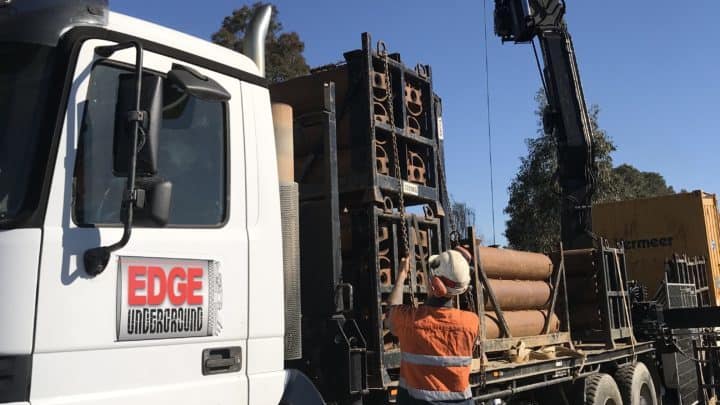A company’s biggest assets are the people that work for it, bringing knowledge, passion and experience. If given the opportunity, they can also help the company – and even the industry – grow by putting forward innovative ideas to improve the equipment or the way things are done. The team at Edge Underground is at the forefront of innovation in microtunnelling, pushing the boundaries of what equipment is capable of doing and finding alternative methods to get jobs done quicker and more efficiently.
As the inventor of the Vermeer AXIS laser guided tunnel boring machine, Stuart Harrison, Managing Director at Edge Underground, understands the value of innovation in the microtunnelling industry and encourages everyone in the company to put forward ideas of how equipment and practices can be improved.
“Microtunnelling was only developed about 50 years ago, so it is in a lot of ways still in its infancy. While it has come a long way and has become a competitive alternative to other traditional methods of pipeline installation, there is still scope for improvement,” Mr Harrison said.
“When I first began developing the AXIS, it was because I saw a gap in the market. At the time, there was no equipment that had the ability to achieve pinpoint accuracy while also being able to maintain a high level of productivity.
“Now AXIS is the most accurate machine on the market, and is able to achieve accuracies of ±10mm and complete projects in tight timeframes.
“The traditional ways of doing pipe installations, are in a way definitely becoming less popular year-by-year as people become more confident and realise the benefits of trenchless. It’s up to us as an industry, and us as a company and as a group, that we firmly believe we can make that change sooner, rather than later.”
A culture of innovation
Mr Harrsion said this is why he encourages everyone at Edge Underground to put forward any ideas that they have, which has resulted in the company being at the forefront of the industry.
“Edge Underground has a group of committed people that are trying to set a benchmark in the industry with the equipment that is currently available,” Mr Harrison said.
“The team is also shaping the future of the industry by looking at ways to improve the equipment and how it’s used to make it more capable to handle not only just the various ground conditions that are out there, but do it more reliably and more consistently, so that we’re not having projects where people are feeling let down by trenchless.
“We understand that when a trenchless technique has an issue, everyone holds their breath; they’re nervous, what does that mean? Does that mean we can’t do it? Does that mean the project length is going to blow out? Are we going to be waiting on things?
“These are all the things that we know are prohibitive to designers actually making a trenchless design consideration from the start of a project.
“That’s why we are always looking at ways to improve the industry, because at the end of the day, we all benefit from the confidence that comes from improved equipment and practices, and reduced job site risk.”
Looking for ways to improve
Mr Harrison said all the people in his team are passionate about taking everything to a new level.
“The team is always looking for ways to improve things and when we think we’re doing something well, it doesn’t mean we stop looking at it. Even if there is not a problem, we look at it and ask ourselves if can we do it better,” Mr Harrison said.
“Most of our guys will wake up in the middle of the night with an idea, that’s how much they enjoy the work and want to keep improving it.
“I certainly get a lot of pleasure out of the fact that the guys that are with us feel that way. All of our guys are definitely driven by what we can achieve.”

